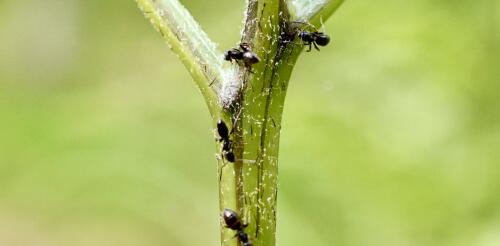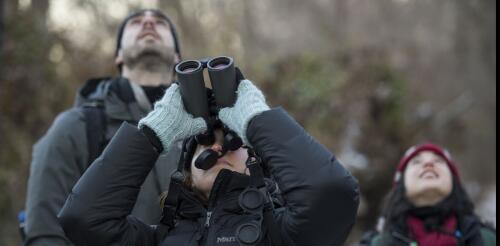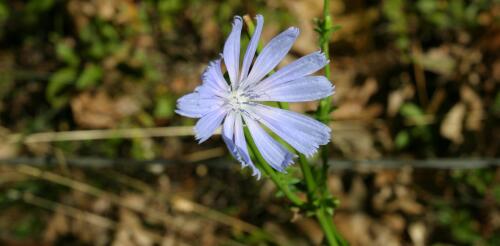Natural history
Look closely at a plant in your local park, your garden or even your kitchen, and you’re likely to see some damage. Whether a caterpillar has chewed away part of a leaf or a mealybug is sucking on sap, animals are constantly feeding on plants. Of course, herbivory, or plant predation, is not ideal for a plant’s survival. So plants have evolved many different defense mechanisms to inhibit this threat, including physical and chemical weapons. For example, cactuses arm their bodies with skin-piercing spines. Herbs such as mint, lavender and rosemary produce volatile scent compounds that can help deter herbivores. Other plants resort to bribing personal bodyguards by secreting thick, sweet nectar. Nectar is most commonly associated with flowers, where it is used to entice bees, birds or butterflies to move pollen from one flower to another. But other plants produce different types of nectar glands called extrafloral nectaries. Plants produce these glands to bribe ants...
Museums often celebrate new acquisitions, especially something rare or historic. In April 2024, scientists from the Natural History Museum of Jamaica and The University of the West Indies, Mona Campus accepted a very rare and historic specimen: a 16-inch lizard called the Jamaican giant galliwasp (Celestus occiduus). It had previously been stored in the Hunterian museum at the University of Glasgow in Scotland. “‘Celeste’ is home!” announced one Jamaican news outlet, invoking the nickname scientists had given the reptile, which they believed was a female. A close-up of ‘Celeste,’ the Jamaican giant galliwasp specimen repatriated to Jamaica. Jane Barlow/PA Images via Getty Images Why would a preserved lizard, some 170 years old, evoke such excitement? Celeste was collected in the 1850s and represents a species that was endemic to Jamaica but is now classified as cri...
This winter, tens of thousands of birders will survey winter bird populations for the National Audubon Society’s Christmas Bird Count, part of an international bird census, powered by volunteers, that has taken place every year since 1900. For many birders, participating in the count is a much-anticipated annual tradition. Tallying birds and compiling results with others connects birders to local, regional and even national birding communities. Comparing this year’s results with previous tallies links birders to past generations. And scientists use the data to assess whether bird populations are thriving or declining. But a change is coming. On Nov. 1, 2023, the American Ornithological Society announced that it will rename 152 bird species that have names honoring historical figures. A Townsend’s Solitaire, one of the species to be renamed. Jared Del Rosso, CC BY-ND Soon, Christma...
Henry David Thoreau, the environmental philosopher and author of “Walden”, was a keen observer of seasonal change. In 1862, for example, he wrote in the Atlantic Monthly: “October is the month of painted leaves. Their rich glow now flashes round the world. As fruits and leaves and the day itself acquire a bright tint just before they fall, so the year near its setting. October is its sunset sky; November the later twilight.” Over the past 20 years, researchers have used Thoreau’s observations of plant flowering, leaf emergence on trees and shrubs, bird migration and spring ice melt on Walden Pond to study how these events have changed since the 1850s, largely in response to climate change. Ecologists have also pulled data for modern-day research from museum specimens, journals of hunting guides and bird and butterfly club reports. Comparisons with historical records have provided insights into shifts in the natural world caused by climate chang...



